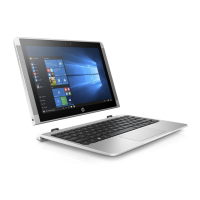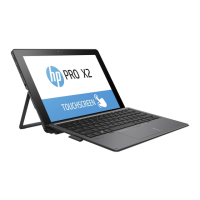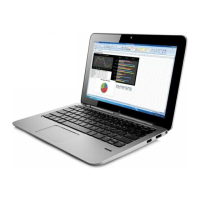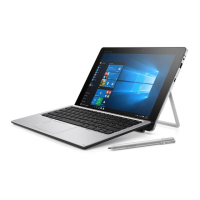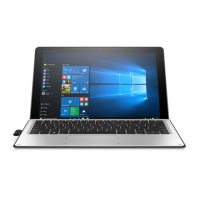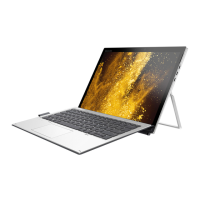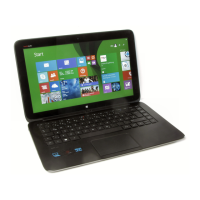Table 7-21 Issues, possible causes, and xes (continued)
Items Procedures
Troubleshooting steps
Perform the following steps one at a time to verify normal boot process:
1. Disconnect all external peripherals, and perform a hard reset (8. Hard reset on
page 78).
2. Perform soft reset (9. Soft reset (Default Settings) on page 79).
3. Update BIOS and drivers (4. Update BIOS and drivers on page 72).
a. Roll back to previous version may be necessary.
b. Go to safe mode to install drivers.
4. Run Hardware Diagnostics (6. HP Hardware Diagnostics and Tools on page 73)
to isolate hardware issue.
5. Undo recent changes in Windows (5. Remove or uninstall recently added
hardware, software on page 73).
6. Reseat cables and connections (10. Reseat cables and connections on page
80).
7. Start Windows in safe mode (11. Test with minimum conguration on page
80).
8. Use Startup Repair Windows to x Windows damaged les.
9. Test with essential hardware conguration (11. Test with minimum
conguration on page 80) with a veried working operating system (for
instance, USB Windows-To-Go), if available, to isolate the software issue.
Tips
For more information, see http://support.hp.com/us-en/document/c03671001.
Electromagnetic Interference (EMI)
Use this information to troubleshoot EMI issues.
Table 7-22
Issues, possible causes, and xes
Items Procedures
Symptoms
System locks up, freezes in certain
physical area or location
Possible causes
Electromagnetic interference (EMI).
Troubleshooting steps
98 Chapter 7 Troubleshooting guide
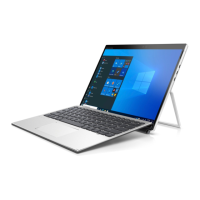
